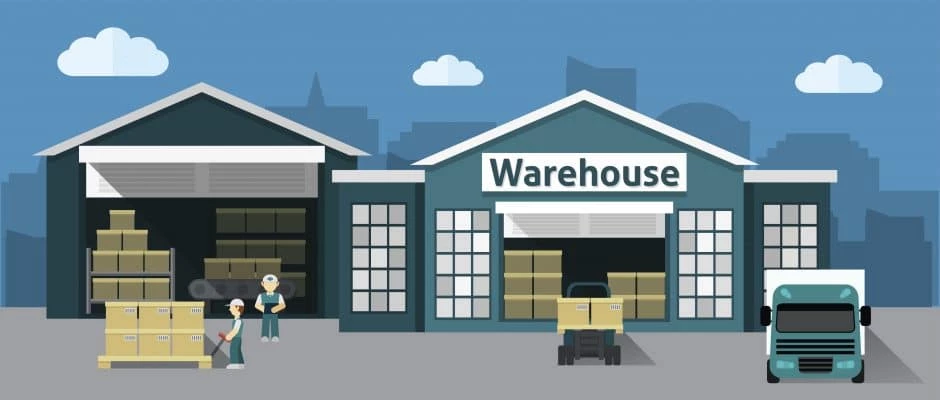
Imagine
this: You are a booming sneaker platform, and someone ordered a limited edition
sneakers from your website and they are eager to receive that exclusive product.
But behind the scenes you are struggling to cope up with the ever-increasing
demand in orders, as your large chaotic warehouse only lead to delayed
deliveries, traffic congestion in long distances, long waiting in procurement
and packaging, sometimes even wrong deliveries which leaves your customer in
anger and disappointment.
These are just a few ways your traditional warehouse might be slowing you down. These traditional warehouses are giant buildings on the outskirts of cities.
While they offer ample storage space, here are several challenges they face in
today's fast e-commerce world:
1. Distance
Dilemma: Traditional warehouses are often located far from city centres which
simply means longer delivery times.
2. Traffic
congestion: Well, who has ever escaped the traffic in metropolitans, same is
the case with delivery guys.
3. Inventory
Imbalance: Large warehouses can lead to inefficient inventory management, with
products getting lost or misplaced due to sheer size.
4. Limited
Flexibility: Traditional warehouses are not easily scalable for businesses
experiencing growth hikes or seasonal fluctuations.
Solution:
Micro-Warehousing is here to speed charge your Supply Chain
Micro-warehousing
is a revolutionary approach to inventory fulfilment. These are strategically
located, smaller-scale warehouses positioned closer to urban areas. Think of
them as mini-distribution hubs that bring products closer to the end consumer.
They bring inventory closer to your customers, cutting both costs and transit times. Automation plays a starring role, streamlining operations for peak efficiency. While they are currently popular in e-commerce, pharmaceuticals, and grocery distribution, micro-warehousing is rapidly becoming popular across various industries due to their significant benefits:
1. Reduced Cost and Space: Compared to traditional 300,000 square foot warehouses, micro-warehouses boast a compact footprint of around 3,000 square feet. Studies by CB Insights suggest micro-fulfilment centres can cut overhead costs by a whopping 75%.
2. Faster Delivery Times: Strategic location is key. Micro-warehouses situated close to customers ensure quicker deliveries and reduced shipping costs due to fewer shipping zones.
3. Enhanced Customer Service: Faster deliveries translate to a happier customer base. Additionally, closer proximity facilitates quicker returns, refunds, and exchanges, further boosting customer satisfaction.
4. Accelerated Order Fulfilment: With automation in micro-fulfilment centres, picking lists can be automated, and the process itself is often mechanized, leading to significantly faster order fulfilment.
5. Business scalability: As more people end up converting by speedy delivery and affordable rates, you drive more sales. Increased sales means increased revenue, which can then help you to scale your business.
Construction of your Micro-Warehouse for swift material handling
To
ensure building a high-performing micro-warehouse that requires a strategic
approach to maximizing space, efficiency, and sustainability, must consider
these crucial elements:
1.
Storage Racks: Optimizing Every Square Foot
Traditional warehouses often struggle with wasted space. Micro-warehouses, with their limited footprint, demand a space-saving strategy. Here are variety of racking and storing options.
a. FIFO
Racks (First-In-First-Out): These ensure optimal stock rotation, minimizing the
risk of expired products and maximizing product freshness, especially important
for F&B industries.
b. Radio
Shuttles: Radio shuttle is a semi-automated storage and retrieval system that
allows for a maximum use of warehouse space. They utilize material
handling equipment to navigate within racking systems, significantly reducing
aisle space needed for forklifts.
c. Mobile
Aisle Systems: These innovative racking storages are mounted on motorized
bases. When not in use, the aisles between the racks can be compacted, creating
additional usable space. This flexibility allows you to adapt your storage
layout to changing inventory needs.
d. Multi-Tier Racking: Think vertical! By maximizing the use of vertical space, multi-tier racking systems create additional storage levels within your micro-warehouse. This allows you to store more inventory without sacrificing valuable floor space in your micro warehouse.
2.
Advance automation in material handling equipment
Micro-warehouses thrive on efficiency. Material handling equipment’s play a pivotal role in streamlining operations and reducing manual labour.
a. Diverter/Sorters:
These automated systems seamlessly sort and distribute packages or goods based
on pre-programmed criteria. This eliminates manual sorting processes, saving
time and increasing order fulfilment speed.
b. Automated
Storage and Retrieval Systems (ASRS): These high-tech systems integrate storage
structures, material handling equipment (like robots), and computer software to
automate the storage and retrieval of goods. This minimizes human error and
significantly speeds up order fulfilment.
c. Articulated
Robots: They are a form of automation commonly used in ASRS, it can handle a
wide range of itemsand tasks, significantly boosting picking and packing
efficiency within your micro-warehouse.
3.
Sustainability: A Green Path to Profitability
Micro-warehouses already have a smaller environmental footprint compared to traditional warehouses, but here are some more devices that will lead to sustainable approach:
a. Energy-Saving
Devices: Investing in LED lighting and energy-efficient appliances can
significantly reduce your micro-warehouse's energy consumption and will also
lead to lower utility bills.
b. Eco-Friendly
Packaging Materials: Opting for biodegradable or recyclable packaging materials
like cardboard boxes or paper cushioning minimizes your environmental impact.
c. Solar
Batteries: Consider harnessing the power from the sun! Installing solar panels and using solar batteries
will not only promote sustainability but also offers long-term cost savings on
your energy bills.
By
incorporating these elements like storage racks, material handling equipment, with
focus on construction using sustainable materials like solar panels – you can
create a micro-warehouse that is not only efficient but also environmentally
responsible.
Now Embrace
these innovative solutions and watch your micro-warehouse become a powerful
engine for your business growth.
POSTED BY
Dikshita Jain
International Master In Business